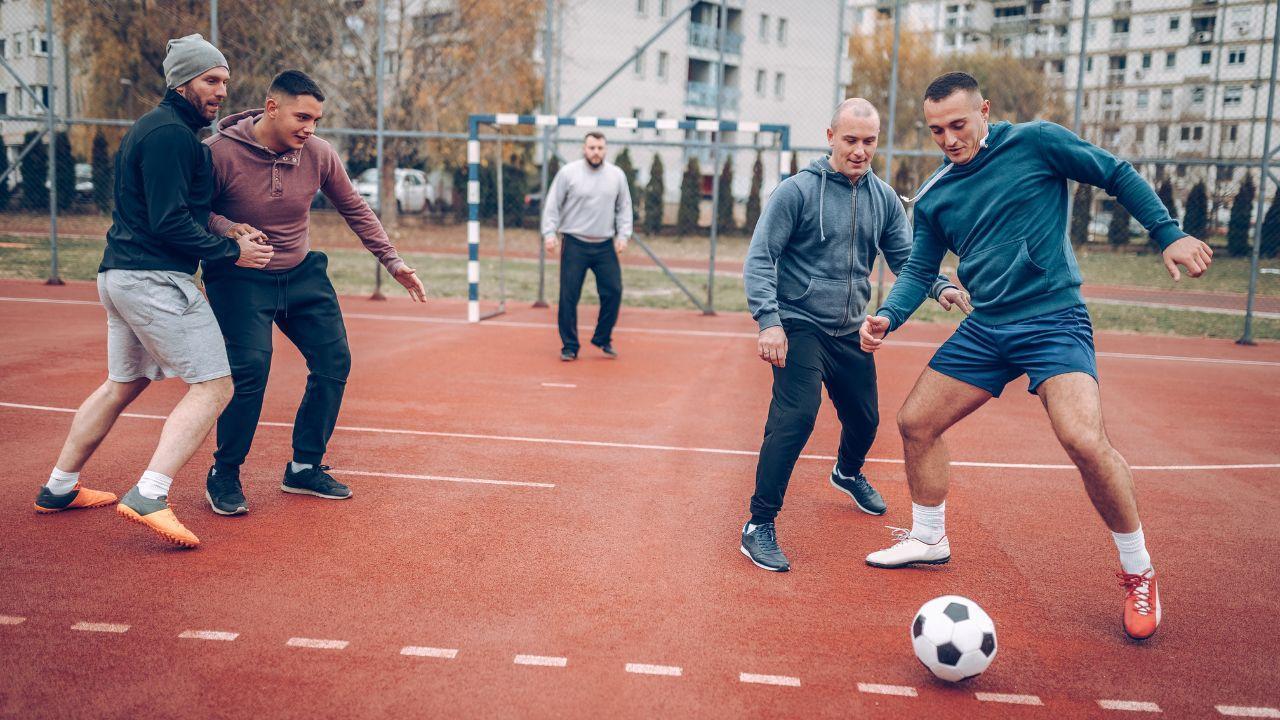You have not yet added any article to your bookmarks!

Join 10k+ people to get notified about new posts, news and tips.
Do not worry we don't spam!

Post by : Laxmi Verma
In competitive sports, raw talent is important—but the real edge often comes from how fast you can move and how quickly you can change direction. Whether you're sprinting down a track, dodging defenders on a soccer field, or reacting to a serve in tennis, speed and agility are key components of athletic success. But have you ever wondered about the science behind speed and agility in sports?
It turns out that both speed and agility are deeply rooted in biomechanics, neuromuscular coordination, and training adaptation. In this article, we'll break down what these terms actually mean, how athletes improve them, and why understanding the science can help anyone—from pros to weekend warriors—get better results.
Speed is defined as the ability to move from one point to another in the shortest possible time. In sports, this can mean sprinting across a football field, delivering a quick punch in boxing, or accelerating toward the basket in basketball.
There are different types of speed in athletics, including:
When we talk about the science behind speed and agility in sports, speed is largely influenced by muscle fiber composition (more on that below), stride length, stride frequency, reaction time, and technique.
Agility is the ability to move quickly and easily, especially when changing direction or position. It combines balance, coordination, speed, reflexes, and strength. Think of a tennis player adjusting quickly to a drop shot or a football player weaving through defenders—that’s agility in action.
Agility requires both physical and cognitive elements. It’s not just about having fast feet; it’s also about having fast brain-to-muscle communication. The nervous system plays a big role here.
At the heart of the science behind speed and agility in sports are muscle fibers. Our bodies have two primary types:
Elite sprinters and quick-reacting athletes often have a higher proportion of fast-twitch fibers, giving them a natural advantage in explosive movements. However, through targeted training, anyone can enhance the function and recruitment of these fibers.
Speed and agility are not just about muscles—they’re also about your brain and nervous system. The central nervous system (CNS) is responsible for sending signals to your muscles. The faster these signals are sent and processed, the faster you move.
That’s why drills that improve reaction time and decision-making are essential components in sports training. Agility ladders, cone drills, and reactive partner drills are all designed to enhance neural efficiency.
Understanding the science behind speed and agility in sports means looking at how the body moves. Biomechanics is the study of human movement, and it plays a huge role in improving speed and agility.
Key elements include:
Biomechanical analysis tools like motion capture and force plates are often used by elite trainers to fine-tune athletic performance.
If you’re looking to improve, here’s how athletes train based on the science behind speed and agility in sports:
Muscles need time and nutrients to recover, rebuild, and adapt. Athletes aiming to improve speed and agility must prioritize sleep, hydration, and balanced meals with protein, healthy fats, and complex carbs.
Ignoring recovery leads to fatigue, poor performance, and a higher risk of injury.
From soccer and basketball to tennis and martial arts, speed and agility are foundational skills. Improving these areas doesn’t just make you faster—it makes you more reactive, efficient, and versatile.
That’s why coaches across all sports now incorporate performance science and customized training programs to enhance these traits. It's not just about running harder—it's about training smarter.
The content in this article, The Science Behind Speed and Agility in Sports, is intended for informational and educational purposes only. It does not constitute professional training, medical, or fitness advice. Always consult a certified coach, trainer, or healthcare provider before beginning any new exercise or sports performance program. Results may vary based on individual fitness levels, training history, and health conditions.










Rashmika Mandanna, Vijay Deverakonda Set to Marry on Feb 26
Rashmika Mandanna and Vijay Deverakonda are reportedly set to marry on February 26, 2026, in a priva

FIFA Stands by 2026 World Cup Ticket Prices Despite Fan Criticism
FIFA defends the high ticket prices for the 2026 World Cup, introducing a $60 tier to make matches m

Trump Claims He Ended India-Pakistan War, Faces Strong Denial
Donald Trump says he brokered the ceasefire between India and Pakistan and resolved eight wars, but

Two Telangana Women Die in California Road Accident, Families Seek Help
Two Telangana women pursuing Master's in the US died in a tragic California crash. Families urge gov

Ranveer Singh’s Dhurandhar Roars Past ₹1100 Cr Worldwide
Ranveer Singh’s Dhurandhar stays unstoppable in week four, crossing ₹1100 crore globally and overtak

Asian Stocks Surge as Dollar Dips, Silver Hits $80 Amid Rate Cut Hopes
Asian markets rally to six-week highs while silver breaks $80, driven by Federal Reserve rate cut ex